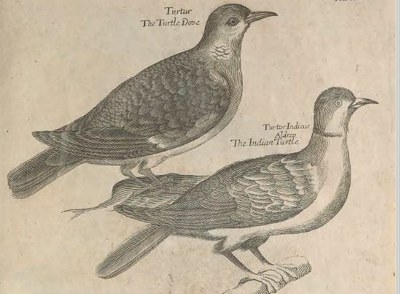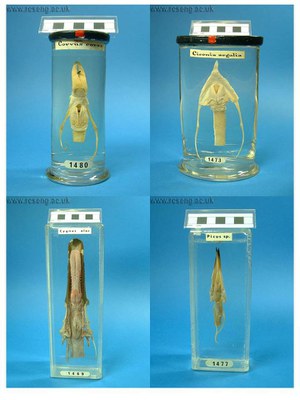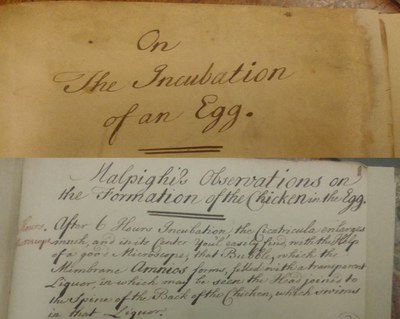The Twelve Days of Christmas - Part 1
04 Dec 2015
Collections Review Team
Our RCS Collections Review, which has been running throughout 2015, has given us unprecedented insight into the College’s museum, library and archive holdings. The Twelve Days of Christmas carol provides us with a perfect seasonal opportunity to highlight just a few of the fascinating items that we have (re)discovered over the past year. This week: days 1-4.

This grey partridge (RCSHC/3452) is a historical specimen made by or for John Hunter. It is part of the “Products of Generation” series, the entirety of which, in contrast to the decimated “Circulatory System” series, survived the bombing of the College in 1941. It shows a young bird near the end of incubation, with well-developed legs, beak and plumage.
Two Turtle Doves

Three French Hens
In the archives, we hold a manuscript (MS0062) entitled “On the Incubation of an Egg.” Although it contains the date 1769, we have no further information about when it might have been written or who the author might be. This is often an issue in archives and can make it difficult to fully understand the significance of the item in question. As you can see from the image, some of the manuscript notes are observations on Malpighi’s work. Interestingly, we do have a copy of Malpighi’s Dissertationes Epistolicae duae una de Formatione Pulli in Ovo. Written in French and published in 1673, it details the formation of the chicken in the egg and contains some fascinating descriptive plates – our French hens.
Four Calling Birds

Collections Review Team


